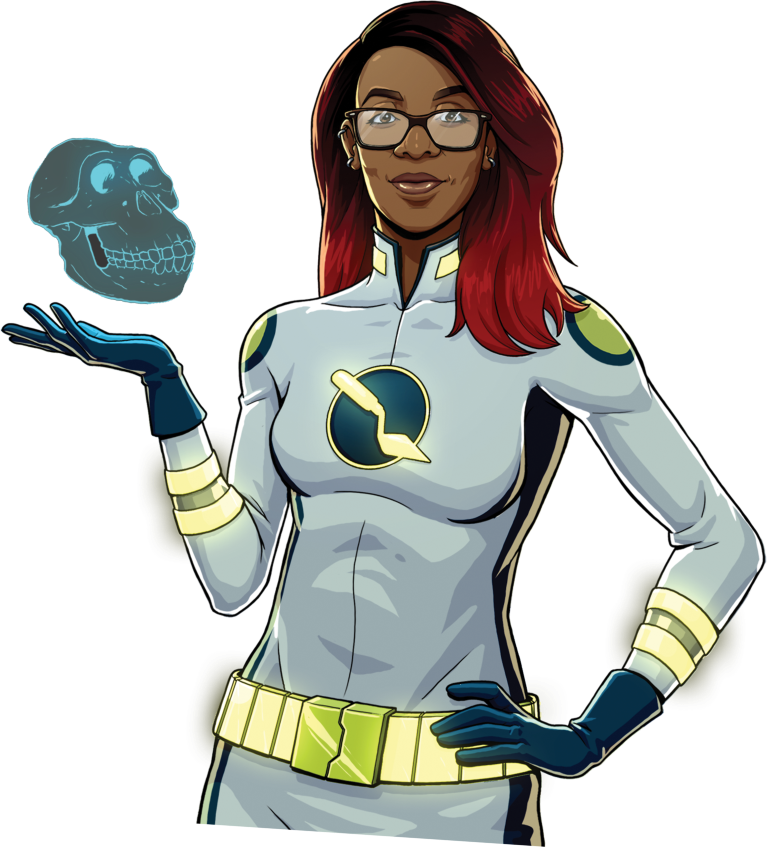
Keneiloe Molopyane at Gladysvale cave.Credit: Wits University/Brett Eloff
My journey into archaeology and paleoanthropology started when I was seven years old, watching a cartoon with my mum. That cartoon was The Adventures of Tintin, and the episode was Cigars of the Pharaoh, which had a strong archaeology theme. I remember turning to my mom and saying, “That’s what I want to grow up to be.”
My obsession with the subject persisted during my schooling, and I went on to study archaeology in college. At the time I had no interest in human evolution. My experiences in class and with the subject — hominins, ancient bones, and stone tools — left me feeling bored.
All that changed when I was a junior lecturer, doing my PhD, and, feeling overwhelmed, I took a mental health break, stepping away from academia. But instead of going to the beach or travelling, I responded to an advert from paleontologist Lee Berger, best known for his discovery of Australopithecus sediba who was seeking “underground astronauts” at the Rising Star cave system.
Suddenly, I was doing this incredibly dangerous thing, risking my life, digging up ancient hominins deep beneath the surface of the Earth.
This was my first venture into a cave system, squeezing myself between rock faces, crawling through tunnels no higher than the back of a chair—such as the famous Superman’s Crawl, through which I would emerge into the Dragon’s Back Chamber. Here, the temperature rose in sync with my adrenaline as I would climb a jagged ridge and step over “Leap of Faith,” a one-metre gap between ledges. If you looked down, all you saw was the blackness. Defying the fear of the rocks below, I would make my way to the start of the Chute Labyrinth journey, wedging through a thin crack into a dark, tight, and smelly space where I would question my choices in life. But on the other end of this quest was the discovery of the Deep Human Journey. And that is where my passion for paleoanthropology and human evolution was ignited.
Bones.Credit: Clyde Beech for www.SuperScientists.org 
I joined the Rising Star team as a junior excavator working in the Dinaledi chamber, where we made remarkable discoveries that we continue studying today. We uncovered evidence pointing to the use of fire, and possibly, cooking utensils which we think may belong to Homo naledi. Immediately after this expedition, I dove back into my PhD with a renewed motivation to complete it so that I could spend my days exploring.
In 2021, I became a National Geographic Society Emerging Explorer and would progress to becoming the lead excavator for the Dragon’s Back chamber at Rising Star Cave. This was the peak of my Rising Star experience.
In the same year, I learned that I had inspired a superhero character called “Bones” in the comic book series, SuperScientists. Having been inspired by a cartoon character myself, this felt like a full-circle moment.
Feeling that I needed to focus on my career progression, I turned my attention to Gladysvale Cave—one of the 13 hominin fossil-bearing caves in the Cradle of Humankind, which hadn’t been explored in more than 20 years. By 2022, I was the Principal Investigator at Gladysvale, becoming the first black South African woman to hold the title for a site in the Cradle and lead a team.
The image accompanying this story is of me at Gladysvale—in the cave with my helmet. And I believe it speaks to the fact that a transformation is happening in the science of palaeoanthropology, in that indigenous, local scientists are now taking the lead.
